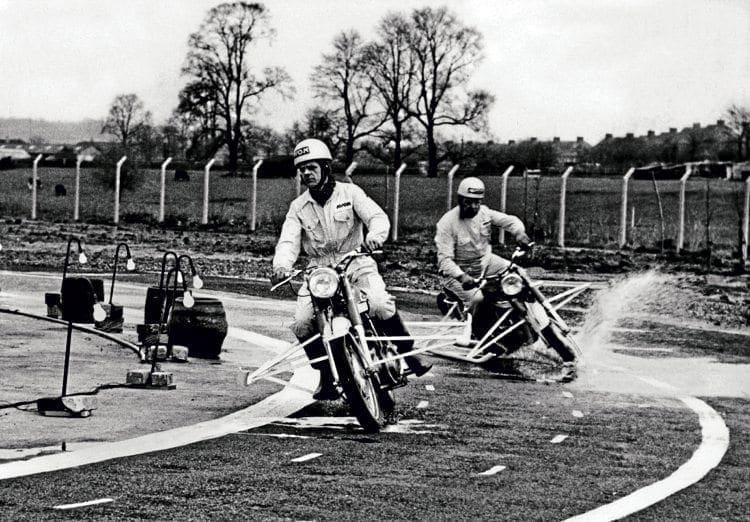As long as they’re not flat at the bottom, eh?
Back in the old days
Before the 1930s, motorcycles often had beaded edge rims to hold the tyres on, as the tyre had no reinforced inner edge.
These tyres had to have pressures of between 50-70psi to keep them from falling off the rim when cornering! Since then, most tyres have steel-wired, or ‘wired on’ tyres which keep them securely on the rim with a lot less pressure.
Have a look at what you’ve got
Tyres are made from rubber, which goes off with time and the sun’s ultra-violet. So for the last 20 years, tyres have had to have their date stamped on the sidewall so we know what we’re buying. This helps in the classic world as many of the old patterns are still used; so if looking at buying a tyre and it has no date stamp, then it’s over 20 years old…

Tube or tubeless?
Wire laced wheels are not air tight, so have to run tubes. And don’t forget your rim tape – a band of rubber that prevents the tube from chafing on the spoke nipples, causing a puncture. Alloy wheels are largely airtight, so can run tyres without a tube. But check if unsure – a tube in a tubeless tyre can overheat and melt.
Size matters
Old sizes were imperial, the most common sizes being 3.25 or 3.50 (the width in inches) by 19(in) on the rear, with 3.00 or 3.25 x 19 front. Some race bikes and Vincents liked to use 20in or 21in wheels – 20in tyres are getting hard to find. Later bikes and European or Japanese bikes use metric tyres, for example a 130 (width in mm) 80 (the tyre wall height as a percentage of the width) by 18 (strangely, the wheel width is still measured in inches!)
Read more in the May 2019 issue of CBG – on sale now!




